26 Flavorful Essential Indian Rice Dishes to Enjoy
Rice holds a sacred place in indian culinary traditions, weaving through regional kitchens with remarkable versatility and cultural significance.
Generations have celebrated these grain-based creations as more than simple sustenance.
Each recipe tells a story of heritage, family connections, and local agricultural practices.
Intricate spice combinations transform basic grains into extraordinary meals that dance with complex flavors.
Skilled home cooks and professional chefs alike approach indian rice dishes with profound respect and creativity.
Regional ingredients and cooking techniques contribute to the remarkable diversity found across the subcontinent.
The passion behind these culinary traditions reflects deep-rooted community connections and generational knowledge.
Here are 27 essential indian rice dishes that showcase culinary mastery:
Essential Indian Rice Dishes for a Flavorful Feast
Rice is at the heart of Indian cooking. Whether spiced, steamed, or layered, these dishes steal the spotlight at any feast.
Hyderabadi Biryani
Hyderabadi biryani dominates South Indian cuisine as a layered rice masterpiece blending aromatic spices, tender meat, and complex cooking techniques.
Mughals introduced this spectacular dish through Persian culinary traditions, creating a unique cooking method called dum where raw meat and rice simmer together in sealed pots.
Basmati rice forms the foundation, complemented by succulent goat, mutton, or chicken marinated in yogurt and saffron.
Two primary styles exist: kachchi (raw) and pakki (cooked), each offering distinct flavor profiles.
Lemon and onions add brightness to the rich mixture, enhancing its depth and complexity.
Exotic spices define the biryani's signature taste, distinguishing it from standard rice preparations.
Slow-cooking ensures every grain absorbs intense flavors and aromas.
Generations of culinary expertise have refined this extraordinary dish into a beloved regional specialty.
Biryani
Biryani represents a royal rice-based dish originating from Mughal imperial kitchens with deep Persian roots.
Traders and immigrants brought this flavorful meal from Persia to India during historic cultural exchanges.
Emperor Shah Jahan's queen Mumtaz Mahal reportedly inspired its creation in the 1600s.
Basmati rice forms the foundation of this complex dish, layered with aromatic spices and protein like meat, eggs, or vegetables.
Dried fruits, nuts, and yogurt often enhance its rich flavor profile.
Derived from the Persian word "birian" meaning roasted, biryani showcases intricate cooking techniques.
Multiple regional variations across India highlight its versatile culinary significance.
Bombay Biryani
Bombay biryani melds aromatic basmati rice with tender chicken or mutton, creating a symphony of spices unique to Mumbai's culinary landscape.
Layers of fragrant rice interweave with perfectly fried potatoes and caramelized onions, delivering a complex flavor profile that tantalizes the palate.
Dried plums and kewra essence contribute a subtle sweetness distinguishing this regional variation from other Indian biryanis.
Signature spices like cardamom, cinnamon, and cloves infuse each grain with deep, warm undertones.
Ghee drizzled over the top adds richness and depth to the dish's intricate composition.
Carefully prepared meat and potatoes are nestled between rice layers, ensuring every bite offers balanced texture and taste.
Raita and fresh salad complement the biryani, providing a cooling contrast to its robust spices.
Traditional cooking methods involve slow-layering ingredients in a sealed pot, allowing flavors to meld and intensify during the cooking process.
Pulao
Pilaf embodies a versatile Middle Eastern rice dish characterized by its signature golden-brown crispy bottom crust called tahdig.
Turkish cuisine celebrates this complex grain preparation as both a side and main course, typically accompanied by fresh salad and tangy yogurt.
Skilled cooks layer rice with an array of ingredients like tender meats, colorful vegetables, sweet dried fruits, and aromatic spices.
Broth gently simmers these components, creating a rich and flavorful one-pot meal that transforms simple ingredients into a deeply satisfying experience.
Each pilaf reflects local traditions and available ingredients, making every version unique.
Rajma Chawal
Rajma chawal is a quintessential North Indian comfort food featuring spicy red kidney beans simmered in a rich tomato-based gravy and served over steamed white rice.
Originating in Punjab, this vegetarian staple offers a protein-packed meal bursting with complex flavors from carefully blended spices like cumin, coriander, and ginger.
Generations of families have enjoyed this hearty dish as a satisfying lunch or dinner option.
Indian restaurants worldwide feature rajma chawal as a classic example of vegetarian cuisine.
Nutritious red beans provide substantial protein and fiber for a balanced meal.
Serving the spicy beans over fluffy rice creates a comforting and filling combination that appeals to many palates.
Mughlai Biryani
Mughlai biryani represents royal Indian cuisine with layers of fragrant spiced rice and succulent meat slow-cooked to perfection.
Emperors from the Mughal era cherished this luxurious dish featuring tender lamb or chicken infused with saffron, cardamom, and nutmeg.
Sultanas and almonds scattered throughout add delightful texture and subtle sweetness to the complex flavor profile.
Generous amounts of aromatic spices create an intense culinary experience that transforms simple ingredients into an extraordinary meal.
Fried onions provide additional depth and richness to each carefully constructed layer.
Traditionally prepared in a sealed pot, the biryani allows ingredients to meld together harmoniously.
Raita often accompanies this spectacular dish, balancing its robust spices.
Best served warm, Mughlai biryani remains a cherished centerpiece at festive celebrations and special gatherings.
Paruppu Sadam
Paruppu sadam is a comforting South Indian rice dish that blends creamy lentils with aromatic spices in a single-pot cooking method.
Originating in Tamil Nadu, this simple yet flavorful preparation combines cooked rice and soft dal seasoned with garlic, chili, cumin, and curry leaves.
Families enjoy paruppu sadam as a quick lunch or dinner option that provides essential protein and warmth.
Karnataka and Tamil Nadu regions frequently serve this dish with crispy potato chips, tangy chutneys, or crunchy appalam.
Vegetarians appreciate its balanced nutritional profile and easy preparation.
Rice and lentils create a hearty, satisfying meal that connects generations through its straightforward and delicious recipe.
Pulihora
Pulihora represents a zesty south Indian rice dish bursting with tangy, spicy, and sacred flavors from Andhra Pradesh, Tamil Nadu, and Karnataka.
Turmeric gives the rice its signature yellow color, symbolizing festive celebrations in Hindu traditions.
Tamarind provides the signature sour taste suggested by the word "puli" in its name.
Green chiles, curry leaves, coriander, and ginger create a complex flavor profile that balances spiciness and saltiness.
Mustard seeds and roasted sesame seed powder add depth and texture to the rice preparation.
Festivals and special occasions often feature this vibrant dish as a centerpiece.
Families prepare pulihora with generations-old techniques, ensuring each batch carries cultural significance and delicious memories.
Jeera Bhaat
Jeera rice sparks Indian cuisine's aromatic essence with its simple yet flavorful blend of fragrant basmati rice and toasted cumin seeds.
Ghee transforms the cumin seeds into golden, crispy morsels that infuse the rice with a warm, earthy flavor profile.
Spice variations often include cinnamon, cardamom, bay leaves, cloves, and coriander for enhanced complexity.
Hindi-Urdu language origins explain the dish's name, with "zeera" directly translating to cumin seeds.
Rich cultural connections make jeera rice a staple in North Indian cuisine, offering a simple yet elegant accompaniment to many meals.
Ghee Rice (Ghee Bhat)
Ghee bhat is a classic Bengali rice dish celebrated for its luxurious simplicity and rich butter-infused flavor.
Basmati rice forms the core of this traditional preparation, carefully washed and soaked to ensure perfect grain texture and minimal breakage.
Cooking involves boiling the rice until precisely done, then immediately mixing it with clarified butter (ghee) and sea salt for maximum taste enhancement.
Culinary variations allow for creative additions like cashews, raisins, aromatic spices such as cinnamon and cardamom, or mixed vegetables to elevate the basic recipe.
Skilled home cooks often prepare this dish as a quick comfort meal or side accompaniment to main courses.
Served piping hot, ghee bhat offers a pure, simple pleasure that connects diners to generations of Bengali cooking traditions.
Nutritionally, the dish provides a rich source of carbohydrates and healthy fats from the high-quality ghee.
Khichdi
Khichdi is a nourishing one-pot rice and lentil mixture originating from South Asia that symbolizes comfort and simplicity across India, Bangladesh, Sri Lanka, Nepal, and Pakistan.
Traditionally served as a primary meal, this versatile dish holds cultural significance as an infant's first solid food and a healing remedy during illness.
Russian explorer Afanasiy Nikitin first documented khichdi in the 15th century, tracing its roots to medieval India.
Spices like cinnamon, cloves, bay leaves, and peppercorns elevate the basic ingredients, creating a flavorful and nutritious blend.
Families often enjoy this soft, warm dish as a quick and satisfying meal.
Sanskrit origins reveal the name "khicca" directly relates to its rice and legume composition.
Matar Pulao
Matar pulao transforms basmati rice into a fragrant North Indian comfort dish packed with green peas and aromatic spices.
Punjabi home kitchens have perfected this one-pot rice preparation through generations of cooking techniques.
Ghee or oil becomes the flavor base when spices like cinnamon, cumin, cardamom, and bay leaves sizzle and release their essential oils.
Green peas provide sweet bursts of color and texture throughout the rice.
Carefully selected whole spices create complex layers of warmth and depth in every bite.
Basmati rice absorbs the rich seasonings, resulting in a golden-hued side dish that complements meat or vegetarian meals.
Gentle stir-frying ensures each grain gets coated with spicy, savory notes.
Traditional methods involve draining rice and combining it with sautéed peas and tempered spices for maximum flavor integration.
Muradabadi Biryani
Muradabadi biryani spices up North Indian cuisine with its unique layered cooking method featuring fragrant basmati rice and tender chicken marinated in a complex blend of aromatic spices.
Originating in Uttar Pradesh, this regional specialty combines traditional Awadhi cooking techniques with intense flavor profiles.
Ginger-garlic paste, hung curd, and a carefully selected mix of whole and ground spices like cinnamon, cardamom, and bay leaves create its distinctive taste.
Green chili peppers add a subtle heat to the dish, while lemon juice provides a tangy brightness.
Chefs layer rice and marinated meat in a sealed pot, allowing flavors to meld during slow cooking.
Served hot, Muradabadi biryani offers a complex, aromatic experience that reflects the rich culinary heritage of Uttar Pradesh.
Curd Rice (Thayir Sadam)
Curd rice embodies Southern Indian comfort with a cool, creamy yogurt-based dish combining steamed rice and tangy dahi.
South Indian regions like Karnataka and Tamil Nadu cherish this simple vegetarian meal as a staple summer refreshment.
Seasoned with green chile peppers, ginger, curry leaves, and mustard seeds, the dish offers a delightful flavor profile.
Fresh ingredients like carrots, cucumbers, or optional fruits such as grapes and pineapple enhance its nutritional value and taste.
Served chilled, the rice absorbs the yogurt's creamy texture, creating a smooth and satisfying consistency.
Nutritionally balanced and easy to digest, curd rice provides a quick, cooling meal perfect for hot climates.
Bisi Bele Bath
Bisi bele bath bursts with Karnataka's rich culinary heritage, a spicy one-pot rice and lentil dish packed with complex flavors and robust ingredients.
Originating from Karnataka, India, this traditional meal combines moist rice, lentils, and a vibrant mix of vegetables like carrots, beans, onions, and green peas.
Historians trace its roots to the 10th-century dish kattogara, though some argue it emerged from Mysore Palace's royal kitchens.
Ghee butter provides a rich base, while tamarind, curry leaves, and nutmeg create its signature tangy and aromatic profile.
Mustard seeds, cinnamon, cashews, and dried coconut enhance the dish's depth and texture.
Initially a meal for royalty without vegetables, bisi bele bath transformed into a hearty farmer's lunch consumed after intense fieldwork.
Modern variations continue to celebrate its versatile and deeply satisfying culinary tradition, making it a beloved comfort food across Karnataka.
Thalassery Biryani
Thalassery biryani epitomizes Kerala's coastal culinary magic through its distinctive short-grain kaima rice and unique layered cooking technique.
Originating from Malabar's Thalassery town, this spectacular dish breaks traditional biryani preparation rules by separately cooking rice and meat before final assembly.
Fragrant kaima rice, native to Kerala's landscape, provides an unparalleled aromatic foundation distinct from standard basmati versions.
Spice-marinated chicken or mutton forms the protein core, carefully prepared with yogurt and regional spice blends.
Kerala's coastal influences shine through each carefully constructed layer of this complex dish.
Marination techniques ensure deep flavor penetration into the meat.
Gentle baking allows perfect texture integration between rice and protein.
Separate cooking methods guarantee each ingredient maintains its individual character while creating a harmonious final presentation.
Coconut Rice (Thengai Sadam)
Thengai sadam emerges as a beloved South Indian rice specialty blending coconut-infused grains with aromatic spices.
Rice serves as the primary foundation, generously mixed with freshly grated coconut for a rich, creamy texture.
Mustard seeds, cumin, hot peppers, and curry leaves create a robust flavor profile that transforms simple ingredients into a complex dish.
Ginger and asafoetida contribute distinctive layers of warmth and depth to the overall taste experience.
Roasted cashews provide a delightful crunch and nutty undertone that complements the soft rice.
Salt and oil help bind the ingredients, ensuring each spoonful delivers maximum flavor.
Regional home cooks prepare this dish as a quick, satisfying meal that reflects South Indian culinary traditions.
Typically served alongside pickles or yogurt, thengai sadam offers a comforting and nutritious dining option.
Panta Bhat
Panta bhat is a traditional Bengali rice dish soaked overnight that transforms plain cooked rice into a nutritious, refreshing meal packed with minerals and probiotic benefits.
Bengalis cherish this simple preparation as a staple breakfast and festive delicacy during summer months and celebrations like New Year.
Rice gets fermented after being cooked and rinsed, then submerged in water for several hours, developing a tangy flavor profile.
Cold serving makes this dish incredibly popular during hot weather conditions.
Water-soaked rice becomes soft and slightly sour, offering a unique taste experience.
Nutritionists praise its digestive properties and potential health advantages.
Rural communities particularly enjoy this economical and easy-to-prepare meal.
Served with accompaniments like green chilies, onions, and salt, panta bhat provides a complete and satisfying eating experience.
Yakhni Pulao
Yakhni pulao embodies a fragrant Persian-inspired rice dish with deep roots in Moghul cuisine, particularly cherished in Kashmir and Uttar Pradesh.
Mutton or chicken forms the protein base of this complex culinary creation.
Aromatic spices like cardamom, fennel, garam masala, and cinnamon infuse the rice with multilayered flavors.
Basmati rice serves as the perfect canvas for the rich meat stock called yakhni.
Onions, ginger, garlic, and tomatoes create a robust flavor foundation when tempered in oil.
Yogurt adds creamy depth to the spice mixture, which is then combined with meat pieces and rice.
Slow cooking allows each ingredient to develop a harmonious blend of traditional Indian flavors.
Every bite promises a sensory journey through generations of culinary expertise.
Pulagam
Pulagam offers comforting nourishment as a simple South Indian rice and lentil porridge traditionally prepared during illness or religious festivals.
Karnataka and Andhra Pradesh regions cherish this wholesome one-pot meal made with freshly harvested rice and split green lentils.
Farmers and families rely on its easy preparation during harvest seasons like Sankranti.
Cumin seeds provide warm aromatics while ghee adds rich smoothness to the dish.
Curry leaves introduce a subtle fragrance that elevates the basic ingredients.
Black pepper contributes gentle heat and depth to the overall flavor profile.
Salt balances the mild taste, creating a soothing and nutritious meal.
Households prepare pulagam quickly as a quick recovery food or spiritual offering with minimal ingredients.
Malabar Chicken Biryani (Malabar Kozhi Biryani)
Malabar chicken biryani highlights Kerala's culinary artistry through its distinctive kaima rice and intricate layering technique.
Southwestern Indian coastal kitchens perfected this slow-cooked dish featuring marinated chicken infused with aromatic spices like star anise, cloves, cinnamon, and fennel seeds.
Short-grain rice provides a unique texture that separates this version from other regional biryanis.
Traditional "dum" preparation involves carefully layering partially cooked rice with seasoned meat in a sealed pot.
Dahi helps tenderize the chicken while adding subtle tanginess to the overall flavor profile.
Spice blends create a mildly sweet undertone that distinguishes this recipe.
Careful cooking methods ensure each grain absorbs complex flavors.
Regional ingredients contribute to its exceptional taste and cultural significance.
Pakhala
Pakhala, a traditional Odia rice dish, transforms simple cooked rice soaked in water into a refreshing summer staple with remarkable cooling properties.
Originating in Odisha, India, this humble preparation features multiple variations like dahi pakhala (with curd), basi pakhala (fermented), and saja pakhala (fresh).
Roasted cumin seeds, ginger, sugar, and salt enhance its subtle flavor profile, while some versions incorporate curd or lime juice to initiate fermentation.
Medical professionals recommend its consumption for its exceptional cooling effects, which helped elevate its status from a poor man's meal to a respected regional specialty.
Traditionally served in akansa (bell metal bowls), pakhala accompanies diverse side dishes including sukhua (dry fish), macha bhaja (fish fries), badi chura (sundried lentil dumpling crumble), and leafy greens.
Malabar Biryani
Malabar biryani represents a unique rice dish from Kerala's southwestern coastal region with exceptional aromatic qualities.
Kerala's signature rice preparation distinguishes itself through milder spice levels and sweeter flavor profiles compared to traditional biryanis.
Short-grained kaima rice forms the dish's foundation, replacing standard basmati varieties used across India.
Mutton and chicken serve as preferred protein selections, carefully marinated in yogurt and spice blends before cooking.
Layering techniques involve strategically placing marinated meats between partially cooked rice grains in a sealed cooking vessel.
Traditional "dum" preparation methods ensure deep flavor infusion and tender meat textures.
Regional spice combinations contribute subtle complexity to each bite.
Generations of Kerala families have perfected this distinctive culinary technique, making Malabar biryani a beloved regional specialty.
Gosht Dum Biryani
Gosht dum represents a luxurious North Indian biryani variant highlighting tender marinated meat layered with fragrant basmati rice.
Slow-cooking techniques ensure meat becomes incredibly succulent and infused with complex spice combinations.
Multiple aromatic spices like cardamom, saffron, and cinnamon create deep flavor profiles characteristic of traditional recipes.
Mutton or goat meat serves as the primary protein, carefully marinated in yogurt and ginger-garlic paste.
Ghee plays a crucial role in developing rich taste foundations for this spectacular dish.
Layering techniques involve alternating meat and rice while incorporating whole spices throughout preparation.
Milk and saffron contribute additional depth and golden color to the final presentation.
Raita accompanies this indulgent meal as a complementary cooling side dish.
Undrallu
Undrallu are savory South Indian rice dumplings steamed to perfection with a distinctive texture and simple preparation method.
Rice gets carefully washed, dried, and ground before mixing with Bengal gram and salt.
Water helps bind ingredients into smooth rounded shapes.
Traditional cooking methods involve steaming these compact balls until they reach a soft, firm consistency.
Andhra Pradesh cuisine celebrates this humble yet nutritious dish as a popular breakfast or side item.
Rice provides primary substance while chana dal adds protein and subtle nutty flavor.
Regional kitchens often serve undrallu during festive ceremonies and family gatherings.
Generations have passed down this straightforward recipe through careful culinary traditions.
Karuveppilai Sadam
Karuveppilai sadam represents a spicy South Indian rice specialty bursting with aromatic curry leaves and complex flavor profiles.
Cooks carefully blend rice with freshly ground curry leaves, creating a vibrant green-tinted dish packed with nutritional benefits.
Southern Indian kitchens traditionally prepare this recipe using fragrant basmati or raw rice as a base ingredient.
Mustard seeds, roasted lentils, and ground spices like cumin and pepper provide deep, layered taste dimensions.
Peanuts offer optional crunchiness and additional protein to the mixture.
Asafoetida and chili peppers contribute subtle heat and distinctive earthy undertones.
Vegetarians especially enjoy this quick one-pot meal as a satisfying lunch or dinner option.
What Spices and Aromatics Are Most Common in Indian Rice Recipes?
Indian rice dishes are celebrated for their fragrant aromas and rich flavors, achieved through a blend of spices and aromatics that vary by region but share some common staples:

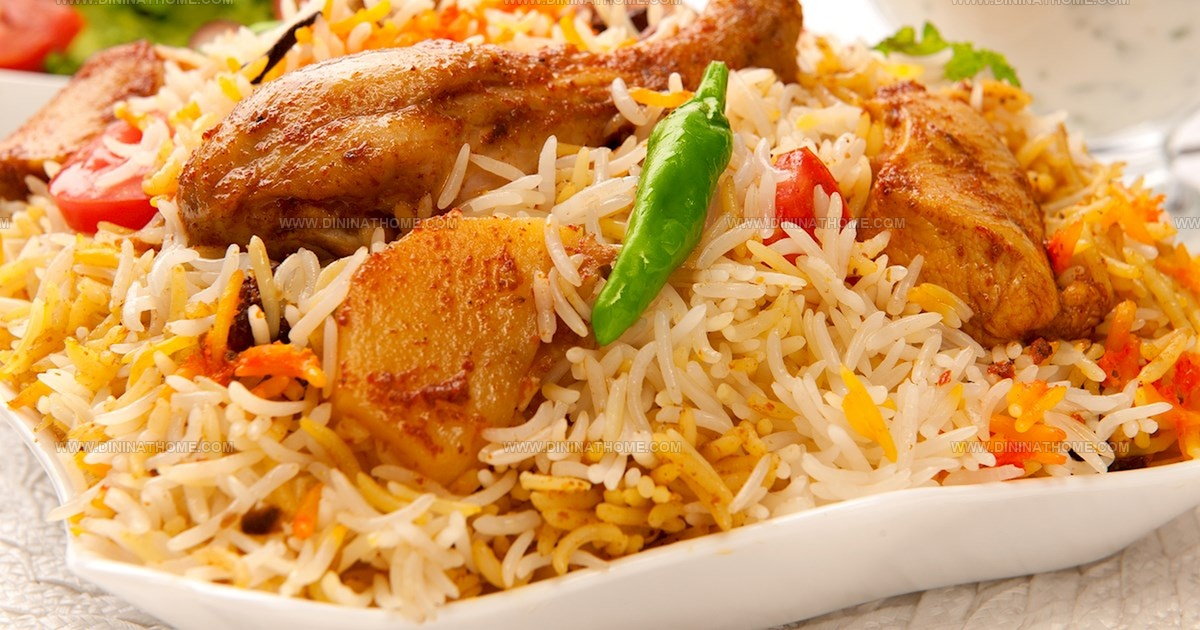
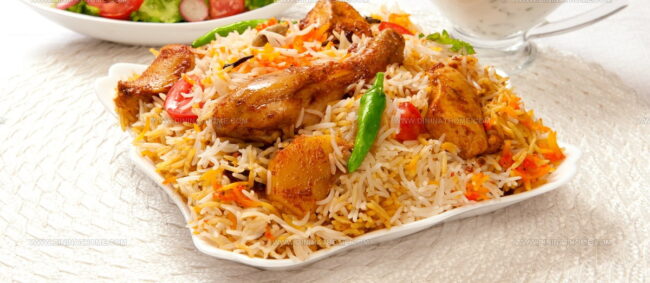
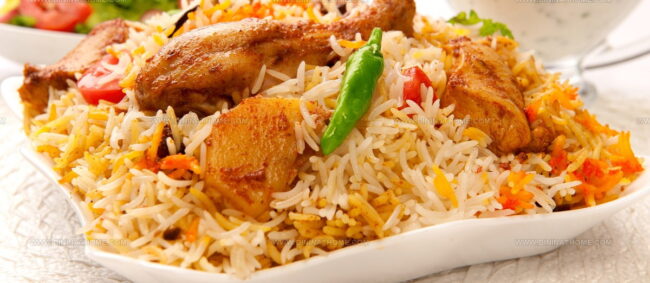
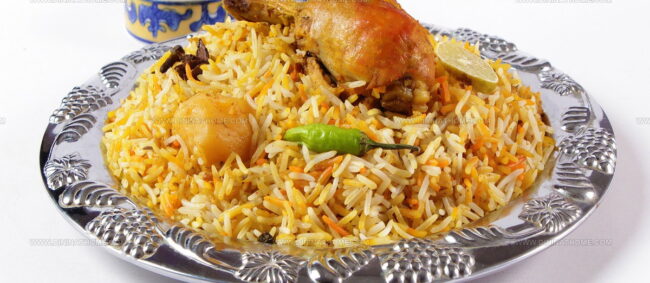
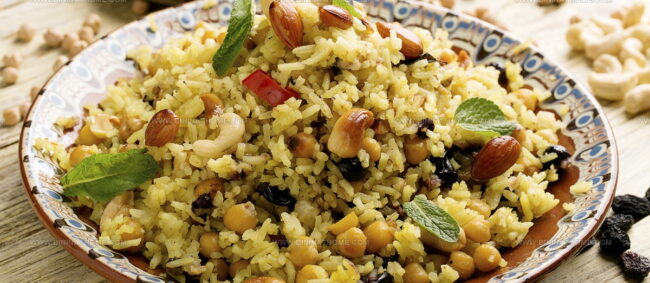
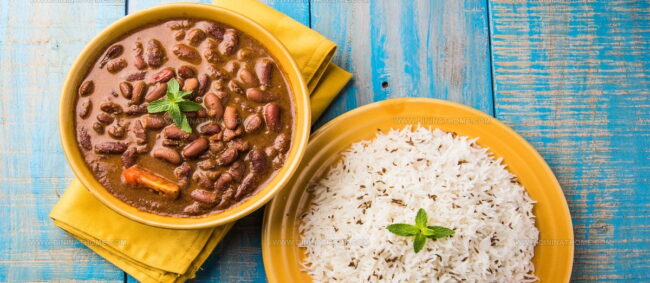
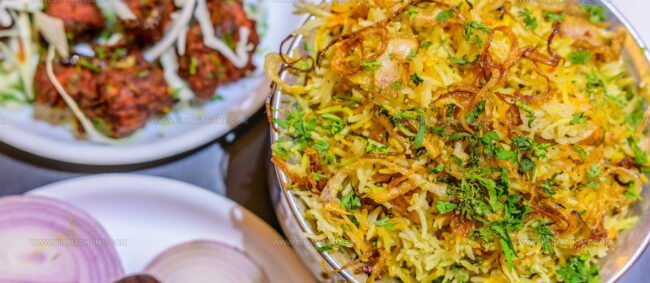
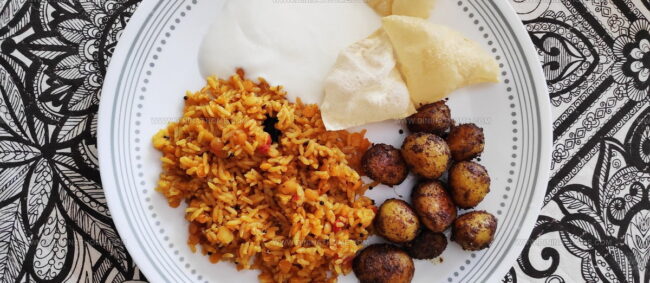
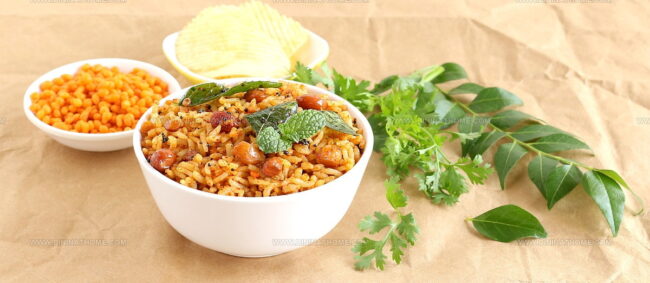
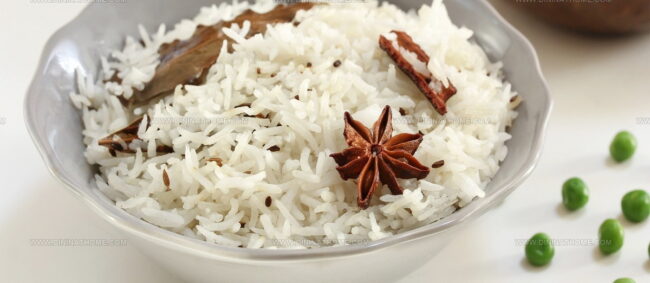
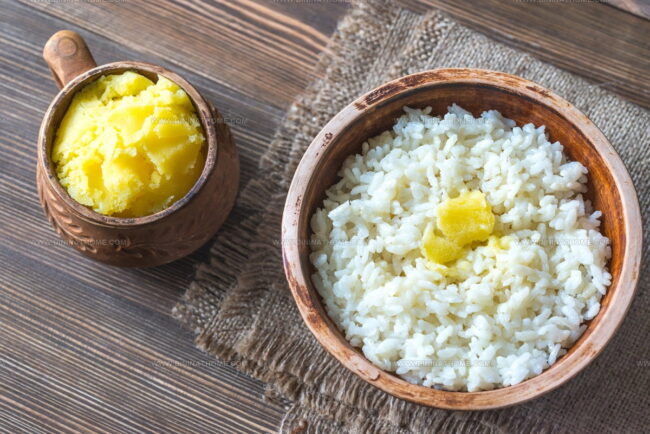
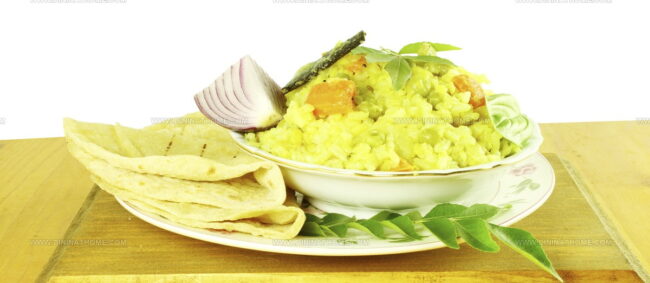
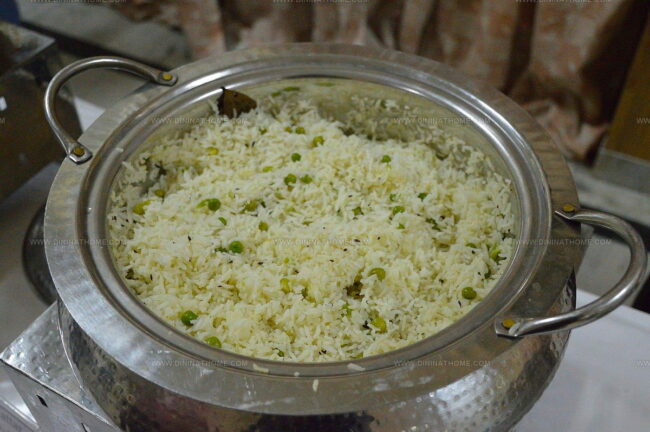
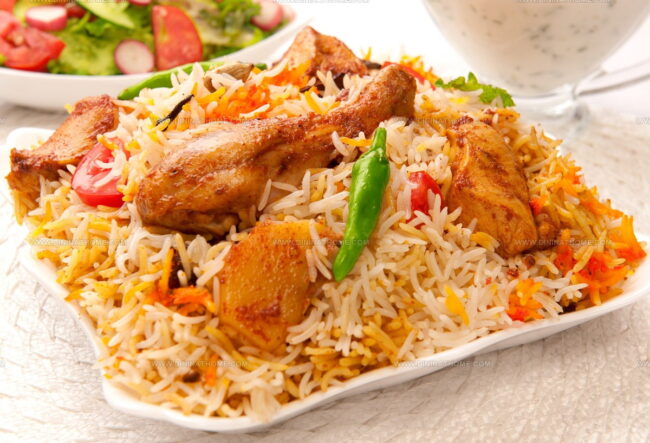
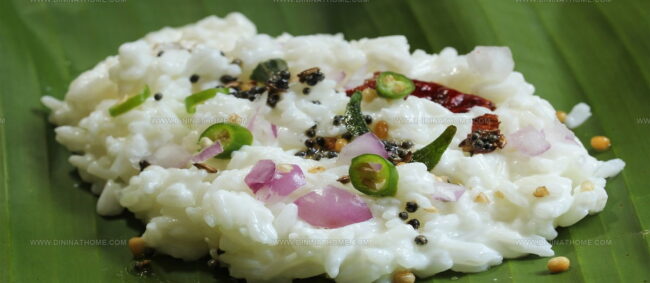
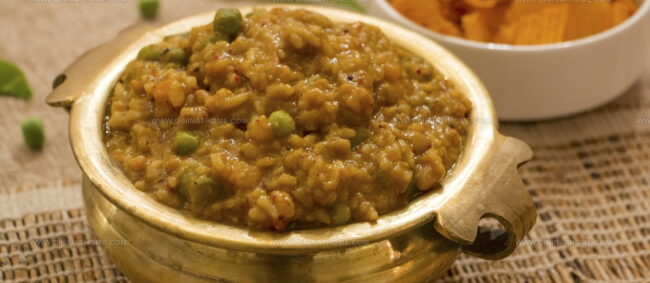
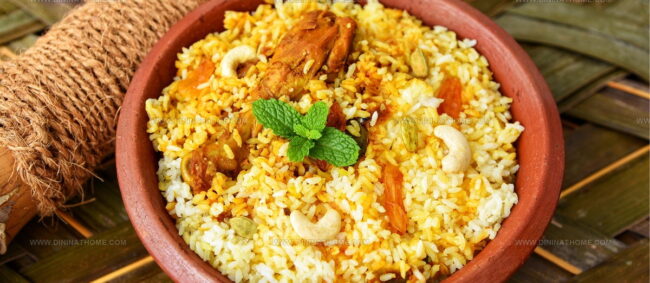
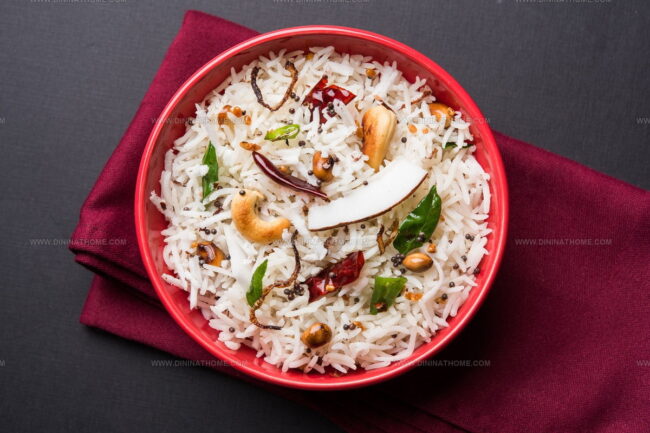
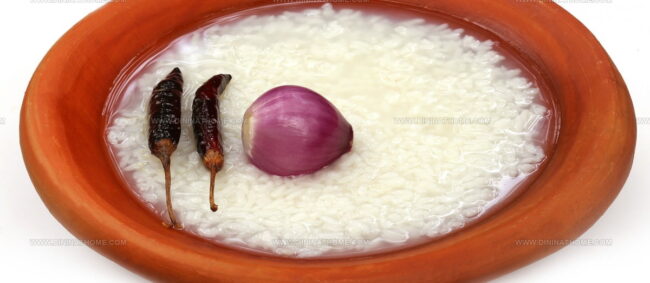
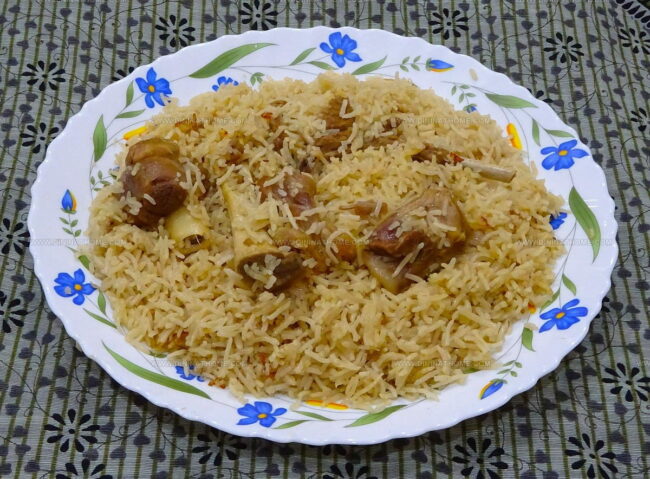
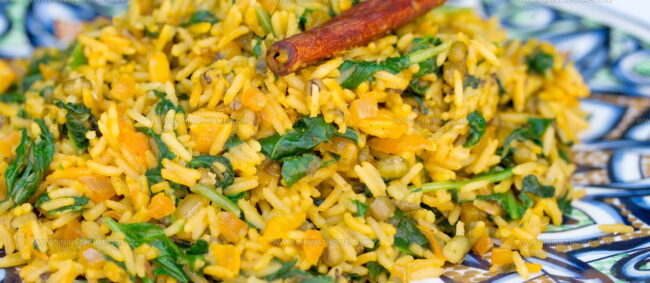
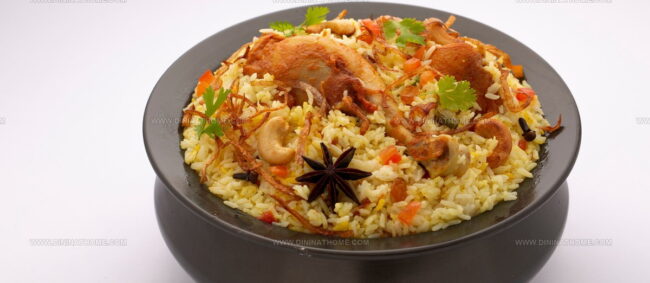
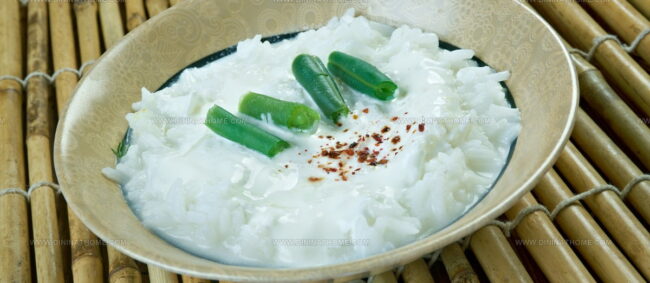
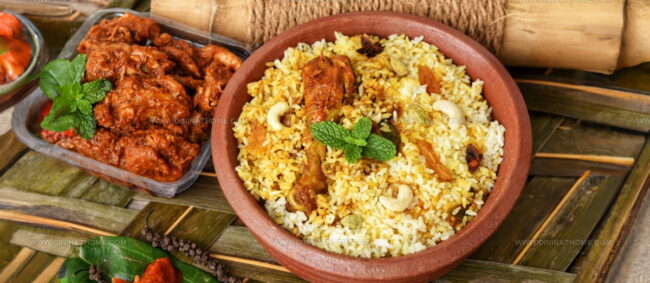
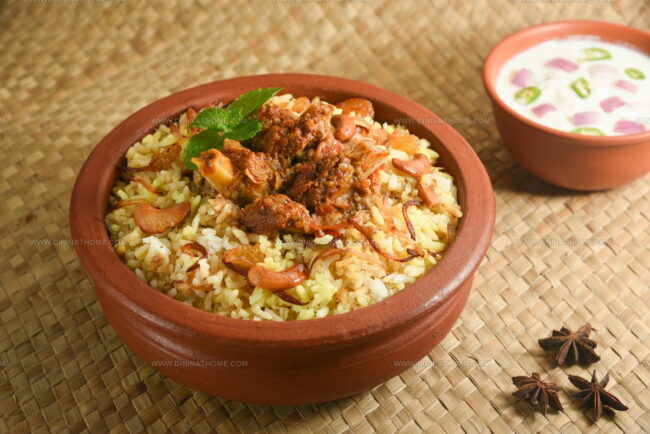
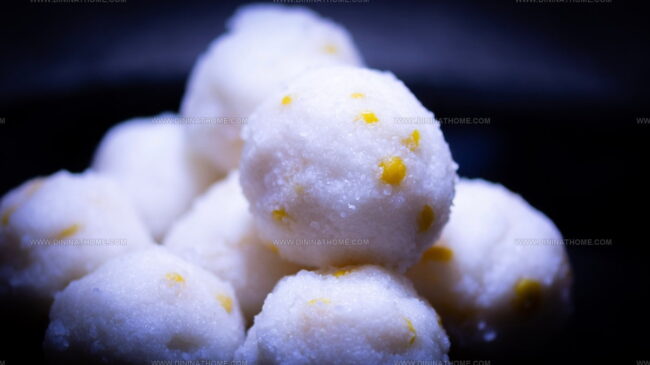
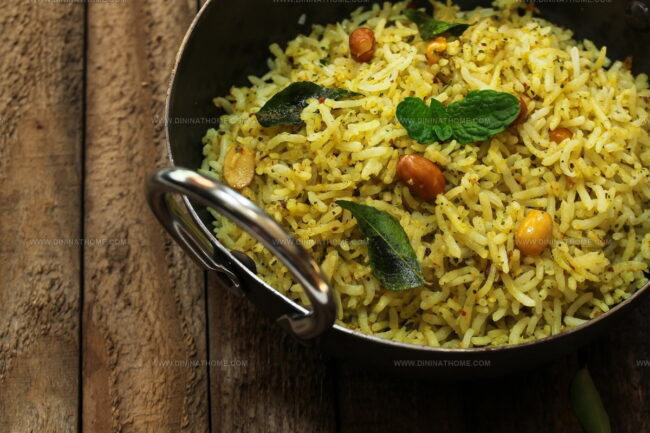
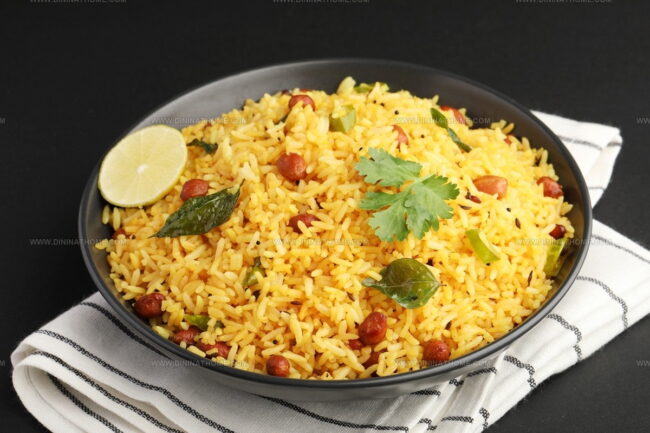
Emily Harper
Nutrition Consultant & Recipe Analyst
Expertise
Healthy Recipe Modification, Nutritional Analysis & Meal Planning, Global Cuisine & Dietary Adaptations
Education
School: French Pastry School, Chicago, IL
Program: L’Art de la Pâtisserie
Focus: Intensive training in traditional French pastry techniques, baking theory, and confectionery arts.
Emily’s journey started in a pastry kitchen but took a detour into the world of health and flavor science.
Graduating from the French Pastry School and studying nutrition opened her eyes to a new mission: making healthy food taste like something you’d actually crave.
At Dining At Home, Emily’s the go-to for smart, feel-good recipes that don’t trade flavor for nutrition.
She’s all about adding a fresh spin on old favorites and finding small ways to make everyday meals a little brighter.
Outside of the kitchen, Emily is most at home walking forest trails, testing plant-based recipes, or sharing a picnic under a wide-open sky.